Sculptures in Art – The History of Three-Dimensional Art
The art of producing a three-dimensional form can be achieved in a variety of creative ways, each with its unique techniques and variations in artistic style that have helped create some of the most stunning and magnanimous sculptures known to date. The best sculptors all had their own philosophies on approaching sculpture and highlighted an appreciation not only for the medium, but the practice of sculpture itself. In this article, we will introduce you to sculpture as an art practice, including a definition of sculpture, the role of sculpture in art, a selection of famous sculptures and their meanings, as well as insight into the process of making sculptures and how technology plays a role in defining the future of sculpture. Keep reading for more about our Contemporary update on the history and future of sculpture!
Contents
- 1 Seizing the Moment with Sculpture: Defining Sculpture
- 2 The Importance of Sculptures in Art
- 3 The History of Sculptures in Art
- 4 Identifying the Role of Sculptures in Art
- 5 A Selection of Famous Sculptors and Sculptures
- 6 The Process of Making Sculptures in Art
- 7 The Future of Sculpture in Contemporary Society
- 8 Frequently Asked Questions
Seizing the Moment with Sculpture: Defining Sculpture
What is sculpture? The word “sculpture” is often used in an art context to refer to a three-dimensional object that is produced using solid materials and has evolved to encompass a broader scope of sculptural art forms and practices using different combinations of mediums to create a three-dimensional artistic structure. When forming a definition of sculpture in the Contemporary period, it is useful to think of the art form as an umbrella term that encompasses freestanding objects that are produced using a variety of media, including wood, marble, plaster, stone, fabric, wax, clay, glass, and any material that can stand on its own. Understanding sculpture can also be put into perspective by studying the processes by which it can be produced, including modeling, casting, welding, assembling, carving, sewing, and any other means by which objects and materials can be combined.
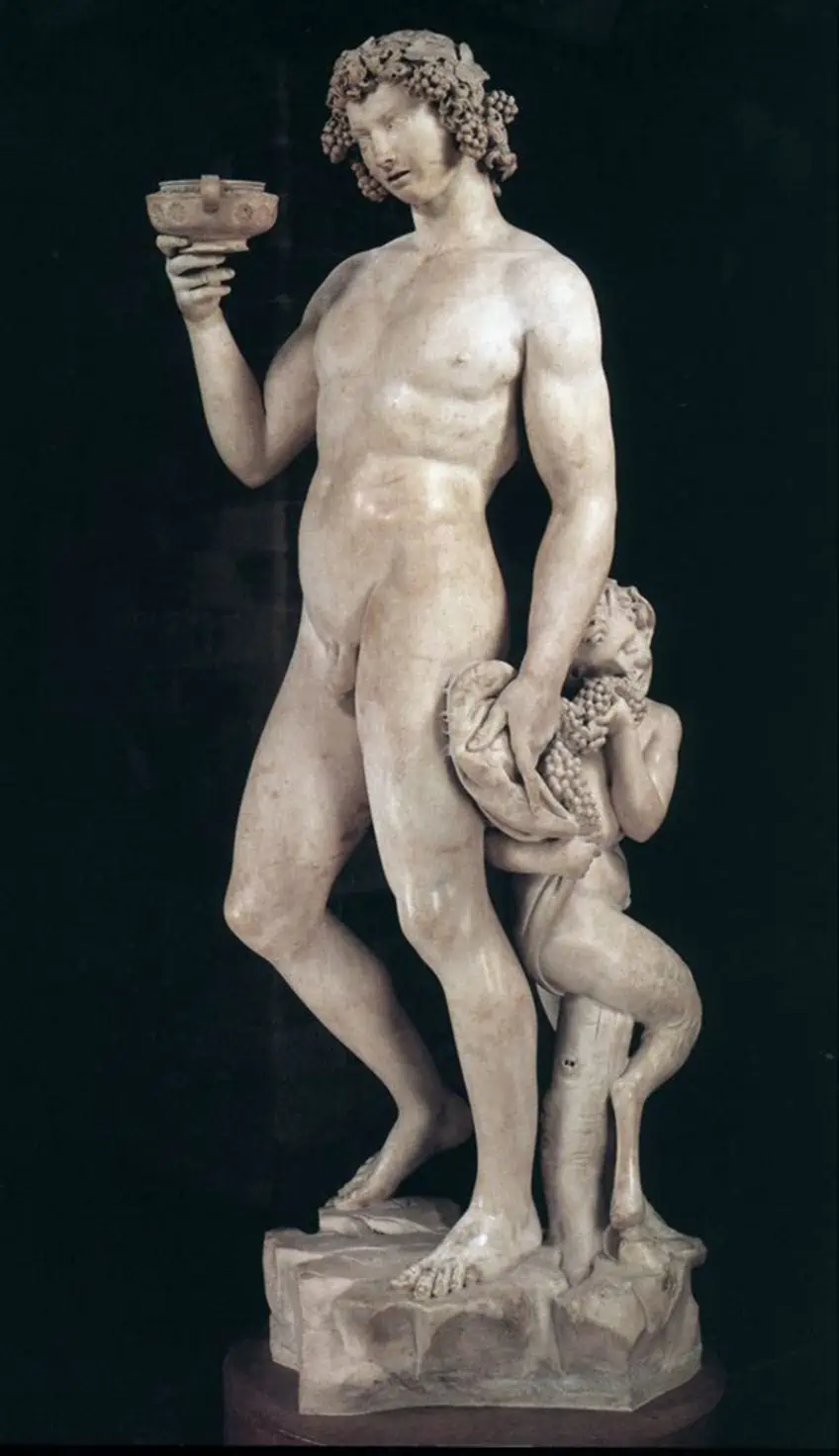
It is important to distinguish the fact that while sculpture can borrow objects from everyday life, common objects are not considered sculptures when placed in an ordinary functional setting. Sculpture was once considered to be a representational art form that aimed to “represent” a character, person, theme, or virtue. However, the 20th century enabled the rapid development of sculpture beyond representation and included abstract forms, shapes, and other modern forms of sculpture such as spatial sculpture to be included under the genre of sculpture.
It is also assumed that sculpture artworks are required to be stationary, which was disproved with the invention of kinetic sculpture, of which a sculpture’s form can also change. Whether a traditional or modern technology to create sculpture is applied, the idea of the artwork defined with a specific three-dimensional form(s) and exhibited as an artwork qualifies it to be a sculpture. The key words to defining sculpture are recognizing its tangibility and its difference from other art forms such as painting, which are two-dimensional and can be used to create illusions.
Sculptures also rely on the elements or principles of design as well as the abilities of a mass to create movement or an enclosure in space.
The coloring or decoration of sculpture relies on both the medium’s natural coloring and the artist’s decision. The use of bright artificial colors in sculpture has also grown since the Middle Ages and has since seen other sculptors adopt the material route to exploit the properties of a material to its full potential to stay true to the beauty of materials in sculpture. The fundamental aspects of sculpture include aspects such as proportion, balance, orientation, scale, and articulation, and are known as the principles of sculptural design that are used to govern sculpture.
In early Greek sculpture, artists were preoccupied with mathematical systems of human proportions, which formed a major part of classical sculpture while Indian artists sought out econometric systems with carefully related proportions to outline the proportions of the important dimensions of the human figure. Other sculptors, such as those based in Africa, depicted the human form and its proportions concerning the importance of certain body parts, which gave rise to “unnatural” proportions that were prioritized for their expressive purposes.
The Importance of Sculptures in Art
Sculpture artworks serve many cultural and artistic functions and are best demonstrated by early civilizations such as the Aztecs, ancient Egyptians, and antiquity cultures of the Mediterranean. To understand the importance of sculptures in art, it is crucial to look at the function of sculpture in art and the different ways and contexts in which it was used. Sculpture was primarily used as a form of artistic expression to express ideas and themes in a three-dimensional form. Sculpture also differs from two-dimensional art such as drawings and paintings since it can exist in the same physical space as the observer and carries a more direct emotional impact.
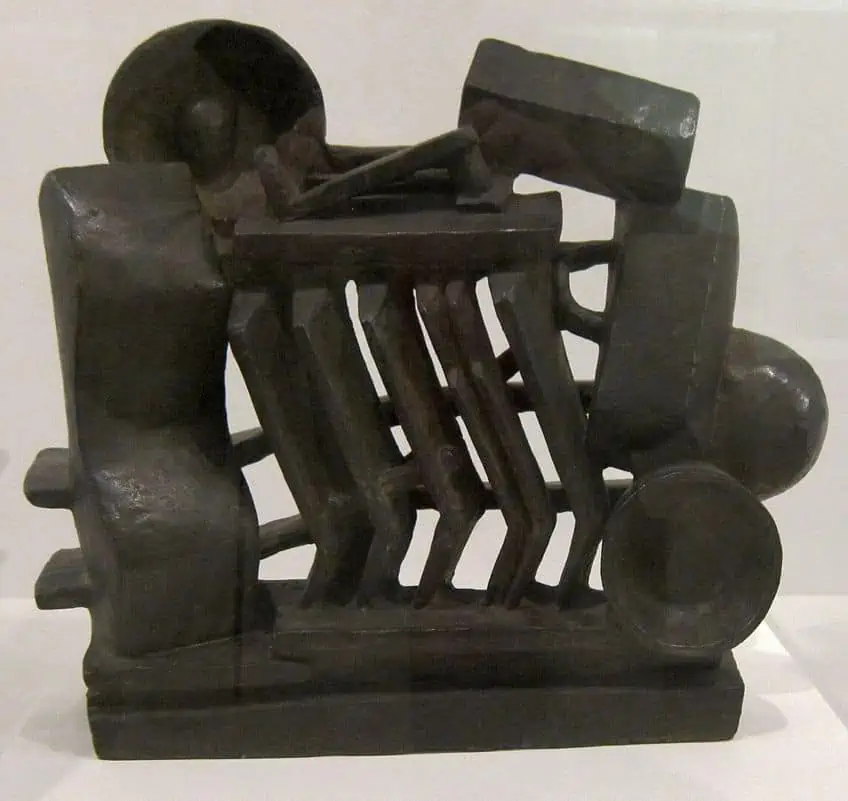
In the history of sculpture, it has also been used as a form of cultural expression and a tool for commemorating important individuals and historicizing religious beliefs, events, and cultural practices. Sculpture can encompass a community’s values and beliefs and is often located in public spaces for public appreciation and the acknowledgment of a society’s values and beliefs. Sculpture plays a prominent role in religious practices and is a form of religious devotion used to depict religious figures, deities, and saints often mounted in places of worship.
One of the most famous examples where sculpture was used to commemorate important political figures and events was ancient Egypt, where pharaohs were celebrated and historicized in the form of bust sculptures and statues. Statues were also found in ancient Greece that were built to honor the victories of the Gods and athletes. In the modern period, sculptures are commissioned to commemorate historical events, serve as public monuments, and hold special meaning in war memorials to honor the dead.
When applied to the field of architecture, sculpture has adopted decorative purposes and provided a practical function where various sculptural elements such as friezes, pediments, and columns have been used to design buildings for centuries.
As such, sculpture has been used to enhance the aesthetic appeal of public buildings and structures as well as provide structural support. During the Renaissance, many sculptors leveraged sculpture to depict classic mythological scenes and figures, which became a tool for critiquing the social norms and political systems of the time. Overall, sculpture has proved to be of immense benefit to the human condition and the enhancement of mental health and well-being since the act of producing a sculpture can also prove to be very therapeutic and meditative while promoting relaxation.
The History of Sculptures in Art
Over the recent centuries, sculpture has formed an integral part of history through artifacts from the past that have provided insight into the civilizations, art styles, and religious beliefs of ancient peoples. From commemoration to mental health and social critique, sculpture artwork is an enduring form of visual expression that has played a significant role in shaping human history and culture. Below we will take a look at an in-depth history of sculpture in art as seen through the origins of sculpture, its evolution, and the different types of sculpture.

The Origins of Sculpture
Now that you recognize the importance of sculpture artworks, we can now dive into the origins of the art form. When exploring the origins of sculpture, one will need to look back 35 – 40,000 years ago, when sculpture was first discovered in the prehistoric culture of the European group of people known as the Aurignacian group. The Aurignacian people were located across southwest Asia and Europe and had developed a range of finely crafted art objects and functional artifacts, including stone tools, ivory beads, bone flutes, bracelets, and pendants. Among these art objects were also three-dimensional figurines, which became known as the earliest pieces of prehistoric cave sculpture. One of the earliest examples of sculpture includes the 30-cm-tall Löwenmensch wooly mammoth ivory sculpture as well as the Venus of Hohle Fels statue.
Numerous other small portable statues known as the Venus figurines were also notable examples of surviving prehistoric art that were located across central Europe and dated back to 24 – 26,000 years ago.
Popular mediums of the prehistoric era included stone such as sandstone, limestone, and granite as well as ivory, bone, clay, metal, and wood. Wooden sculptures are rare to find since many prehistoric sculptures were crafted using pine or cedar wood and would have perished over time. Metals such as bronze, copper, and gold were also used to create small ornaments and figurines. In ancient Greece’s early Bronze Age, around the 3rd Millennium BCE, a significant development in sculpture appeared when marble figures were being sculpted in elegant and geometric styles. Typical sculptural poses for figurative statues included the standing pose with the figure’s arms crossed in front and various other poses featuring musicians. Ancient civilizations such as the Mycenaean at Minoan cultures also developed sculpture under the influence of Syrian art.
By 650 BCE, statues called kouros, which were large free-standing naked figures of male youths, were found in temples and tombs. The female equivalent of the kouros statues was known as kore statues and characteristically displayed an “archaic smile”, representing the deities or the person buried in the tombs in which they were found. Around the 6th century, Greek sculpture saw a rapid development in the production of naturalistic sculptures with varied figurative themes and narratives that followed the ideal conventions of sculpture. The Parthenon in Athens is one of the most famous ancient sculptural structures with a pediment that incorporated approximately 520 figures.

Artists of the ancient Middle East also provided some of the most important cultural developments of the ancient world. These included a human figurine located in Ain Ghazal in Jordan and back to around 7000 BCE. One of the major developments from the prehistoric Middle East includes Sumerian sculpture, which was produced by Sumerian artists who occupied Mesopotamia and were best known for their large intricate sculptures and statues of kings, Gods, and other political figures. One of the most famous Sumerian sculptures was the Victory Stele of Naram-Sin (c. 2254-2218 BCE), portraying a king standing over his enemies.
Other interesting sculptural developments occurred in Assyrian sculpture, which dominated the 9th century BCE and was known to be the most elaborate sculpture of the ancient world. Assyrian sculptures were typically large stone-carved sculptures that portrayed powerful figures. Persian sculptures were also admired for their intricate attention to detail and Realism. The Persian Empire produced sculptures such as the Persepolis frieze which portrays the Royal Court in great detail.
The Evolution of Sculpture: From Prehistory to the Modern Era
Now that you understand a brief history of the origins of sculptures in prehistory and the context of ancient civilizations, we can now unpack the evolution of sculpture in terms of its development of form, shape, and style over the centuries. From prehistory to ancient civilizations, we have seen the development of sculpture evolve from naturalistic styles to geometric and mathematical design principles that have helped introduce new art styles. The highly stylized forms of prehistory had also shifted to highly realistic representations of mythical figures and other Renaissance compositions that became precursors to Modern art and abstraction. Prehistoric sculpture was defined by portable figurines, perishable materials, and stylized exaggerated forms.
Many prehistoric sculptures also explored representations of humans and animals using clay and other pliable materials.
Notable prehistoric sculptures can be seen in the bison models after French caves at Tuc d’Audoubert as well as the Venus of Willendorf. Over time, sculpture transitioned from representational forms to venerative figures as seen in many ancient civilizations. The ancient Egyptians used sculpture for religious and funerary purposes while the ancient Greeks used sculpture for religious and political purposes, however, the focus in Greek sculpture emphasized the human form and the realistic depiction of biblical heroes, everyday subjects, and mythological Gods.
The Romans also contributed to sculpture and its development as they were inspired by the artwork of the Greeks. Roman sculpture emphasized historical narrative and portraiture and was typically much larger than ancient Greek sculptures. The Romans were also credited with developing a sculpture technique for casting sculptures in bronze, which enabled greater detail and intricacy and sculptural artworks. The Middle Ages or Medieval period was a point in history where sculpture was primarily focused on religion and Symbolism as opposed to the Classicism and Naturalism found in antiquity sculpture. Popular materials used during the Medieval period included stone and wood with elongated figures and exaggerated stylized features.
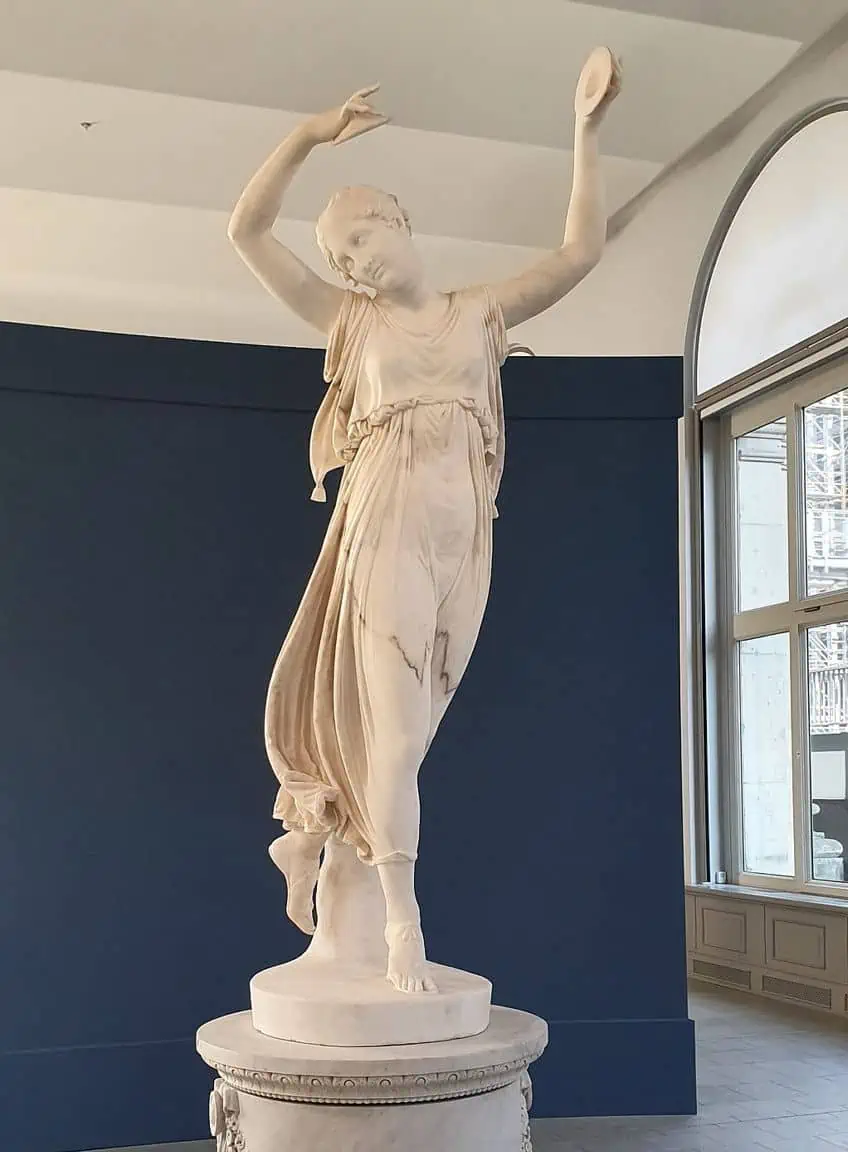
After the highly religious persona of the Medieval period, sculpture returned to Realism and Naturalism, and was highly detailed. Sculptors tended to focus on capturing anatomical accuracy in figurative works using natural poses. Regarding the development of style in sculpture, artists shifted from religious and mythological scenes as found in ancient civilizations to exaggerated and dramatic scenes characterized by the Baroque period in Renaissance art. Popular materials used in the Renaissance included marble and bronze, which portrayed religious and mythological themes. The Baroque era was a movement in sculpture where sculptors rejected ideal notions of beauty in favor of the expression of emotion and theatrical movements. Sculptures of the Baroque era were textured and highly ornamental. The Neoclassical period also saw the emergence of realistic depictions of subjects, which later led to modern representations and abstract forms in sculpture that were used to express emotions, narrate stories, and capture the beauty of subjects.
Materiality in sculpture had also evolved from the use of perishable materials such as bone, stone, and ivory, which were often used in prehistory, to modern and industrial materials such as marble, bronze, cast iron, and plaster that were popular during the Neoclassical period. The modern era, also defined by the late 19th and early 20th centuries, marked a departure from traditional approaches to sculpture in terms of material and technique. Many sculptors began adopting and experimenting with new materials, especially found objects and industrial materials inspired by the industrial age. Sculptures of the Modern era are considered to be predominantly conceptual and emphasize experimentation with new ideas and forms.
The evolution of sculpture can thus be tracked by noting the change in artistic preference regarding materiality, shape, form, and artistic intent as outlined by the different artistic periods in history.
Exploring the Different Types of Sculpture in Art
What are the four basic types of sculpture? While there are around eight different types of sculptures that one can use to explore a variety of different materials and concepts, the four main types of sculpture include relief sculpture, subtractive sculpture, additive sculpture, and casting sculpture. Below, we will explore the common sculpture types as found in fine art history that will give you a general understanding of just how wide the scope of sculpture has evolved.
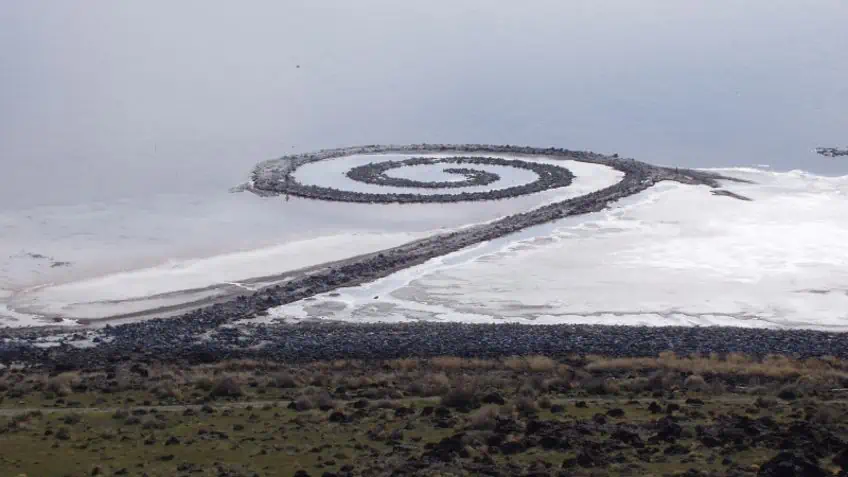
- Free-standing sculpture: Free-standing sculptures can support themselves and are designed in a way that allows the viewer to appreciate the work from all angles and sides. Free-standing sculptures are the most famous kinds of sculptures and can be created in the round. Famous examples of free-standing sculptures include David (1501-1504) by Michelangelo and The Statue of Liberty (1886) by Frédéric Auguste Barthold.
- Relief sculpture: Relief sculptures are a type of sculpture that can be produced by molding or carving into a flat surface to give the observer the impression that the relief is a three-dimensional scene or object. Relief sculptures are categorized as either bas-relief (low-relief) or high-relief sculptures. A few famous examples of relief sculptures include the Parthenon Frieze (449-432 BCE) by Phidias, which is a low-relief sculpture, and a high-relief sculpture by Lorenzo Ghiberti known as the Gates of Paradise (1426-1452).
- Kinetic sculpture: Kinetic sculptures are a type of sculpture designed to move with the assistance of natural elements such as the wind or water or the insertion of a motor into a sculpture. The main principle behind a kinetic sculpture is to enable the artwork to move, which alters the form of the artwork. A few popular examples of kinetic sculpture include works such as Bicycle Wheel (1913) by Marcel Duchamp, Kinetic Construction (Standing Wave) (1920) by Naum Gabo, and Roel van Dijk’s Kissing Ball.
- Assemblage sculpture: Assemblage is one of the most unique sculpture types that relies on the use of found objects and everyday items to produce a three-dimensional form. Popular assemblage artists include figures like Georges Braque, Richard Hamilton, Betye Saar, and Marcel Duchamp, who combined the fields of paintings and sculpture to produce assemblages that are inspired by the context of time.
- Installation sculpture: These sculptures are defined by their intention to be experienced and exhibited in a specific environment. The intention behind installation sculptures is founded on transforming the way viewers engage with the space and the artwork such that it offers an experience of the sculpture concerning its space.
- Environmental sculpture: Environmental sculptures are often created on a large scale and are produced to create an experience that speaks to environmental issues and concerns. These types of works are often exhibited in the natural environment and are created so that viewers can identify the relationships of the sculpture with the natural environment. Some of the most famous environmental sculptures include Spiral Jetty (1970) and Broken Circle/Spiral Hill (1971) by Robert Smithson.
- Abstract sculpture: Abstract sculptures do not represent a recognizable form or subject; however, they do emphasize the sculptural elements of the structure such as its texture, form, color, and other material qualities. Abstract sculptures can also incorporate minimalistic forms that range from organic to geometric elements.
- Figurative sculpture: Figurative sculptures represent human or animal forms and can be rendered abstractly or realistically. Famous examples of figurative sculptures include Jeff Koons’ Balloon Dog (c. 1994), which is an abstract example of figurative sculpture, and Auguste Rodin’s The Thinker (1904), which is a realistic example of figurative sculpture.
Identifying the Role of Sculptures in Art
As discussed above, sculpture plays a role in determining the way that we interpret different themes and perceive three-dimensional figures. The role of sculpture in art extends beyond its aesthetic quality and can form part of an artist’s philosophical approach to their sculptural art practice. Below, we will dive into the different roles of sculpture in art that extend beyond its aesthetic value. We will explore the significance of sculpture in art as well as how sculptures communicate ideas, and the relationships between sculptures and their environment.
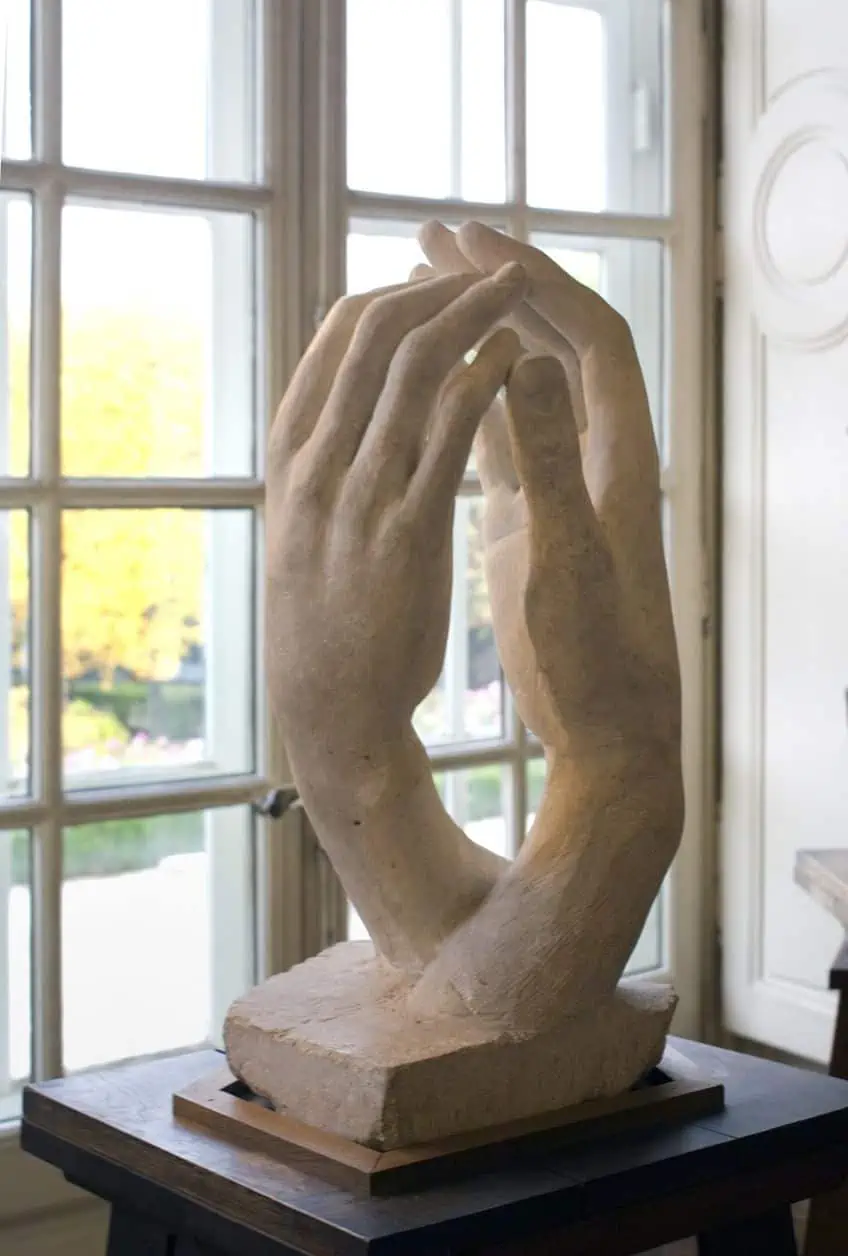
The Significance of Sculptures in Art
What is the significance of sculptures in art beyond their aesthetic value of enhancing a space? Aside from sculpture enhancing the aesthetic of its environment, sculptures are also incredibly important to the historicization of people in history, who are considered particularly influential or important. Sculptures in arts also help inform our understanding of three-dimensional space and how three-dimensional objects can be perceived and built-in space. Sculptures also help provide a level of tangibility to otherwise abstract concepts and themes that would be slightly more challenging to perceive on a two-dimensional surface.
The role of sculpture in art history was also important to the development of our relationship with materials beyond their architecture and function or uses.
Without the genre of sculpture in history, there would not be significant knowledge about the manipulation of different media to achieve different visual outcomes. Historically, sculpture has helped to preserve important cultural belief systems and ritual objects that give researchers valuable information into the lives of ancient civilizations and technologies. Sculptural artworks that contain scenes and narratives of historical events and natural occurrences are also crucial to the broader understanding and timeline of history since the materials that were used to produce sculptures can also be dated, thanks to advanced Contemporary technology.
Sculpture also has the power to influence Society in terms of who is represented and who is historicized in sculpture. The selection of materials in sculpture is also significant to the longevity of an artwork and therefore a simple artistic decision such as material can determine the significance of the artwork and the level of social status that an individual had to commission such an artwork. Sculpture also helps promote specific ideals concerning the human form and was especially influential in determining the classical standards of beauty as derived from ancient Greek sculpture.
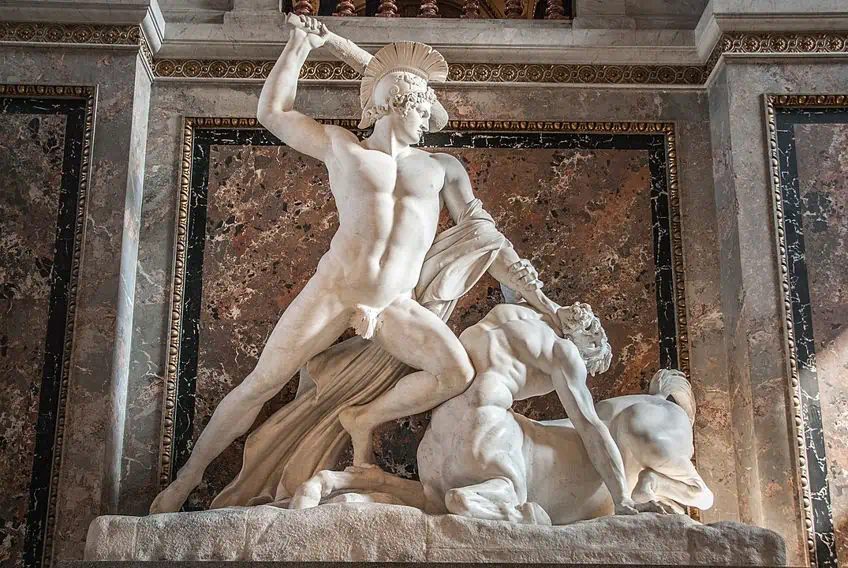
How Sculptures Communicate Ideas
So how do sculptures communicate ideas? and how does one derive a concept from a single sculpture? Sculptors employ a variety of sculptural techniques to achieve their desired visual objective, however, artists also have to consider using certain approaches to convey the core message of the artwork.
One way that sculpture can communicate ideas is through the subject matter of the sculpture, which can convey a specific message or meaning.
Artists have the power to embed their sculptures with symbols or characters that represent complex emotional themes, such as bravery or courage. Artists can therefore use symbols and popular iconography to convey ideas about topics that are generally understood by a certain group of people.
Other ways that artists can convey messages is by altering the form and composition of their cultural sculptures, which can include a variety of techniques to invoke emotional responses in the viewer, and this can include the use of shapes, textures, and lines to convey a sense of conflict or tension. By adjusting the artwork’s sculptural elements and composition, artists can convey a diverse array of emotions and set the mood of a sculpture.

Sculptures can also be leveraged concerning their environment and placement to convey messages about issues about the context, as well as the importance of what is represented in the sculpture. Sculptures that are positioned in public spaces are intentionally situated as such to attract a large audience and be perceived by a variety of people. Public sculptures often convey messages that are relevant to the area in which it is located and is relatable to the community that witnesses them.
The Relationship Between Sculptures and Their Environment
Since sculptures can be located in a variety of locations, such as art, galleries, museums, private collections, and public areas, it is worth noting that sculptures certainly play a role in defining the relationship between an artwork and its environment. The context of artwork can influence the way that artwork is red, and the same principle applies to the field of sculpture. Public art is one of the best examples to help you understand the relationships that are created between sculptures and the environments public art is often installed in public areas, such as streets, parks, and plazas, which invite a diverse audience. Public sculptures invite engagement and spark conversation about the artwork and its relationship to its environment.
When a sculpture is positioned in a public space, it becomes part of the public space and interacts with the environment in a variety of ways sculptures can be placed in urban or natural environments, and depending on their structural and compositional qualities, they can either be perceived as part of or against the environment. A sculpture that is installed in a busy street would be interpreted as an obstruction as opposed to an artwork that was carefully considered and would be viewed as an object against its environment.
On the other hand, a sculpture that has been carved with gentle edges, and placed in a natural setting, such as a park would be perceived as an artwork that complements its context.
Public sculptures can also help a community build a sense of identity and pride while other public sculptures can function as landmarks or tourist attractions. Sculptures can also influence a society’s view on political or social issues by raising awareness through commemorative statues or symbols.
Sculptures, therefore, play an important role in determining whether an artwork creates tension in its environment. Artists can either employ organic or geometric shapes, depending on the environment that they would best be suited to. Another connection between sculptures in the environment is that they influence the experience of the public. Sculptures that are found in public, such as freestanding sculptures, are designed to be viewed from multiple angles and different distances test determines the experience of the viewer and can either attract the viewer’s attention to a particular feature or create a sense of movement and flow with its context.
A Selection of Famous Sculptors and Sculptures
Now that you have an in-depth understanding of the role of sculpture in art history and its significance( you can now appreciate a selection of famous sculptures in the sculptures who have influenced the development of sculpture itself. Below, we have compiled a list of the most famous sculptures and sculptures of all time which demonstrate how artists have tested the boundaries of sculpture through various techniques.
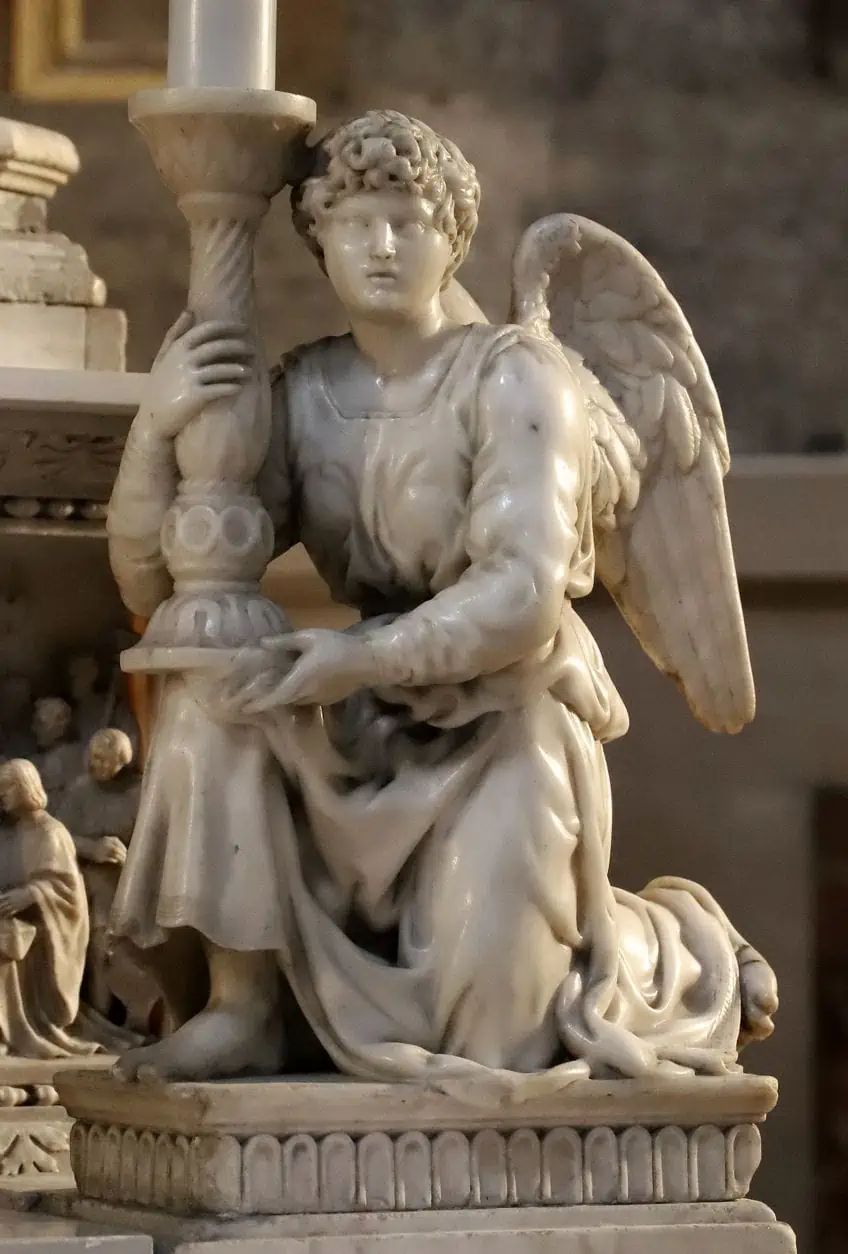
Michelangelo Buonarroti (1475 – 1564)
| Artist Name | Michelangelo di Lodovico Buonarroti Simoni |
| Date of Birth | 6 March 1475 |
| Date of Death | 18 February 1564 |
| Nationality | Italian |
| Associated Movements, Themes, and Styles | Italian Renaissance, Mannerism, and the High Renaissance |
| Mediums | Sculpture, painting, and drawing |
| Famous Artworks | ● Crucifix (1492) ● Angel (1494 – 1495) ● Bacchus (1496 – 1497) ● David (1501 – 1504) ● Madonna of Bruges (1501 – 1504) |
Michelangelo Buonarotti was one of the most famous High Renaissance Italian sculptors of the 15th century, who created many iconic sculptures. Michelangelo was best known for his contribution to the Sistine Chapel in the Vatican, as well as being one of the greatest sculptors of the late 15th and early 16th centuries. What made Michelangelo’s sculptures so unique was that his style of sculpture was a unique blend of physical realism and psychological intensity that was never before seen in art history.
Michelangelo was best known for describing his sculptures as releasing his subjects from their base matter, which can be seen in masterpieces such as David.
David (1501 – 1504)
| Date | 1501 – 1504 |
| Medium | Marble |
| Dimensions (cm) | 517 x 199 |
| Where It Is Housed | Galleria dell’Accademia, Florence, Italy |
Located in the Accademia Gallery, David is among Michelangelo’s best sculptures that portray the heroic figure of the biblical character David who strategically killed the giant Goliath using a slingshot. David is a towering Carrara marble statue that stands at around 3.17 meters tall and was one of the largest works of the time. David was carved from a single block of marble that was initially deemed unworkable after previous attempts by other artists to carve the massive statue without errors. Michelangelo’s delicate hand was perfect for the job and as such, David was completed in four years.
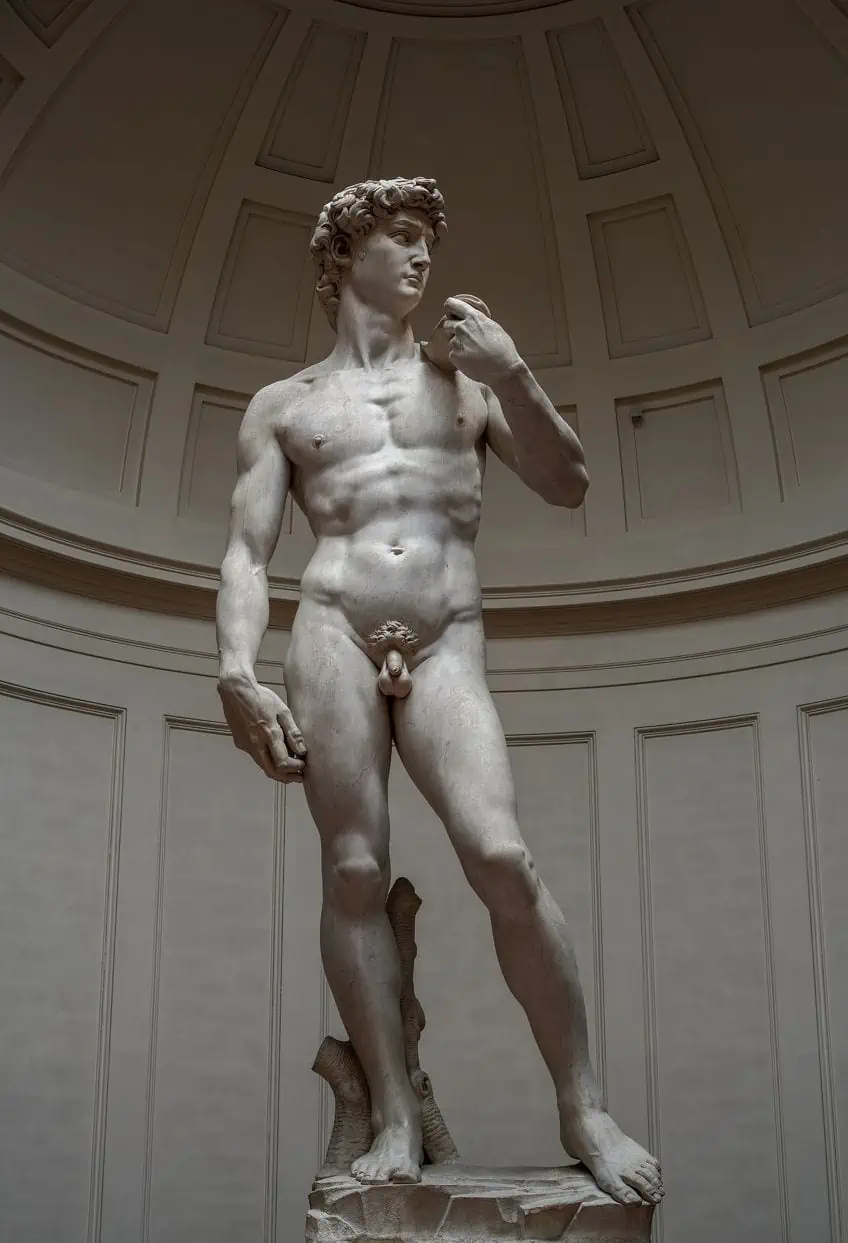
Gian Lorenzo Bernini (1598 – 1680)
| Artist Name | Gian Lorenzo Bernini |
| Date of Birth | 7 December 1598 |
| Date of Death | 28 November 1680 |
| Nationality | Italian |
| Associated Movements, Themes, and Styles | Baroque |
| Mediums | Sculpture, architecture, and painting |
| Famous Artworks | ● Gates of Paradise (1452 – 1525) ● The Rape of Proserpina (1621 – 1622) ● Apollo and Daphne (1622 – 1625) ● David (1623) ● The Ecstasy of Saint Teresa (1647 – 1652) |
Gian Lorenzo Bernini was one of the most famous Italian sculptors of the Baroque style and was most famous for his contribution to architecture. One of the most famous techniques that Bernini employed to achieve his baroque and ornate architectural sculptures, was the lost-wax method. This was a painstaking process that involved the creation of a wax original, from which to model the sculpture. Bernini was a master of Baroque sculpture who demonstrated his technical know-how via his mastery of drama, movement, and tension in sculpture.
The main characteristics of baroque art styles included a sense of grandiosity, emotional exuberance, movement, dynamism, and drama.
The Ecstasy of Saint Teresa (1647 – 1652)
| Date | 1647 – 1652 |
| Medium | White marble |
| Dimensions (cm) | 350 (h) |
| Where It Is Housed | Cornaro Chapel, Church of Santa Maria della Vittoria, Rome, Italy |
The Ecstasy of Saint Teresa is Bernini’s most famous sculpture, which is a representation of the saint’s spiritual pleasure and is also a suggestive work that alludes to sensual pleasure. According to Bernini, the sculpture, and the expression of awe on Teresa’s face were a testament to her love of God and desire for spiritual union. Other analyses identify the expression as spiritual pain expressed by the physical body and as a Christian artwork meant to express the pleasure of serving Christ. The sculpture was created as a commissioned piece for the chapel of the Santa Maria Della Vittoria in Rome and was based on the Spanish Carmelite reformer known as Teresa of Ávila.
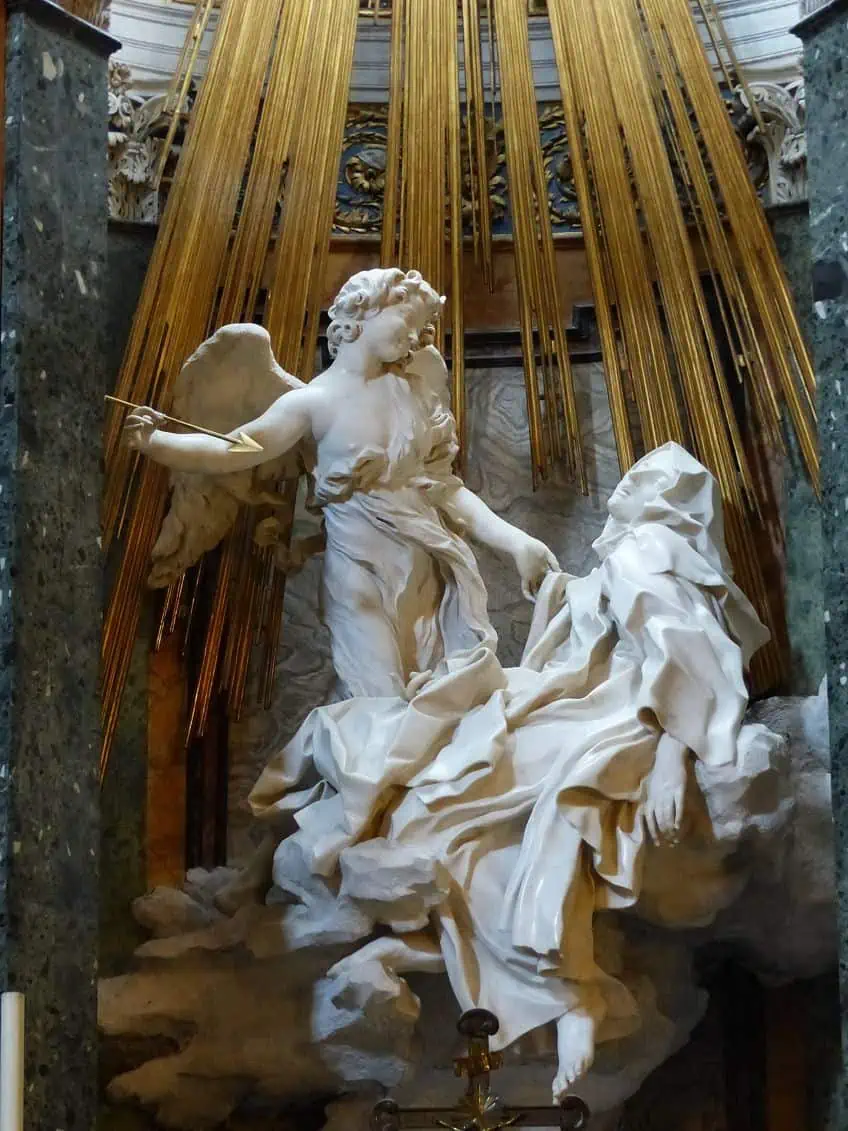
Antonio Canova (1757 – 1822)
| Artist Name | Antonio Canova |
| Date of Birth | 1 November 1757 |
| Date of Death | 13 October 1822 |
| Nationality | Italian |
| Associated Movements, Themes, and Styles | Neoclassicism |
| Mediums | Sculpture |
| Famous Artworks | ● Psyche Revived by Cupid’s Kiss (1793) ● Venus and Adonis (1794) ● Venus Victrix (1804 – 1808) ● The Three Graces (1814 – 1817) ● Venus and Mars (1816) |
Antonio Canova was a prolific sculptor of the 18th century who created many iconic sculptures of scenes from Greek mythology. Canova was best known for his contribution to Neoclassical sculpture inspired by the Baroque art style. The Italian artist was considered to be a pioneer of fusing classical antiquity styles with new aesthetics of the early 19th century to create gentle and elegant works of art. Canova began his sculptural journey by using a Rococo style that was also decorative and emotional.
After visiting Rome a few times, Canova settled to return to Neoclassicism, which was defined by stoic expressions and Classical Roman and Greek sculptural qualities.
Psyche Revived by Cupid’s Kiss (1793)
| Date | 1793 |
| Medium | Marble |
| Dimensions (cm) | 155 x 168 |
| Where It Is Housed | Louvre Museum, Paris, France |
Psyche Revived by Cupid’s Kiss was among Canova’s most famous sculptures from Neoclassicism that demonstrates his mastery over the fusion of Graeco-Roman mythology with subtle expressions. Canova was commissioned by Colonel John Campbell in 1787 to create the sculpture, which is currently housed at the Louvre Museum today. The sculpture is admired for its nostalgic return to Greek mythology as it displays figures of Psyche and Cupid in a moment of great affection and emotion. The main theme behind the sculpture is Psyche, receiving the breath of life given by Cupid and representing the couple’s last union in their marriage. The theme of the sculpture was overcoming obstacles of love and covers other themes such as redemption via divine favor, dangerous curiosity, punishments, and tests, which are all obstacles of love.
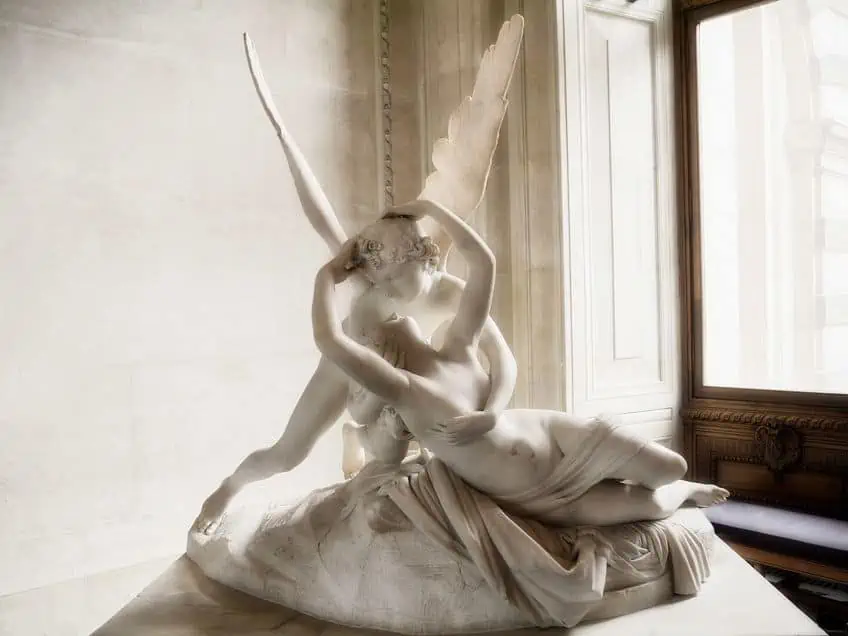
Auguste Rodin (1840 – 1917)
| Artist Name | François Auguste René Rodin |
| Date of Birth | 12 November 1840 |
| Date of Death | 17 November 1917 |
| Nationality | French |
| Associated Movements, Themes, and Styles | Impressionism and Modern art |
| Mediums | Sculpture, painting, and drawing |
| Famous Artworks | ● The Gates of Hell (1880 – 1917) ● Ugolino and His Sons (1881) ● The Kiss (1882) ● Eternal Idol (1893) ● The Thinker (California Palace of the Legion of Honor) (1904) |
Auguste Rodin was one of the most profound figures of modern sculpture who was admired for his unique ability to transform clay by modeling complex scenes in the medium. Rodin was a famous French artist who broke academic tradition by focusing on expressive sculpture as opposed to classical idealism. His work went on to influence many Modern sculptors throughout the 20th century. Rodin’s approach to sculpture was inspired by Renaissance masters such as Donatello and artists like Paul Dubois.
Among his most famous sculptures are The Kiss (1882) and The Thinker (1904), both of which are works to contemplate on.
The Kiss (1882)
| Date | 1882 |
| Medium | Marble |
| Dimensions (cm) | 182 x 112 x 117 |
| Where It Is Housed | The National Museum of Western Art, Tokyo, Japan |
The Kiss is an intimate and beautiful marble sculpture that echoes its beginning in The Gates of Hell. The sculpture portrays a nude couple sharing a kiss while embracing each other and is one of the most replicated poses for painters and sculptors who were inspired by Rodin. The couple represented in the sculpture is said to represent a doomed couple, inspired by characters from Dante Alighieri’s Divine Comedy (c. 14th century). The couple was originally a feature on Rodin’s earlier sculpture The Gates of Hell, which was commissioned by the French government.
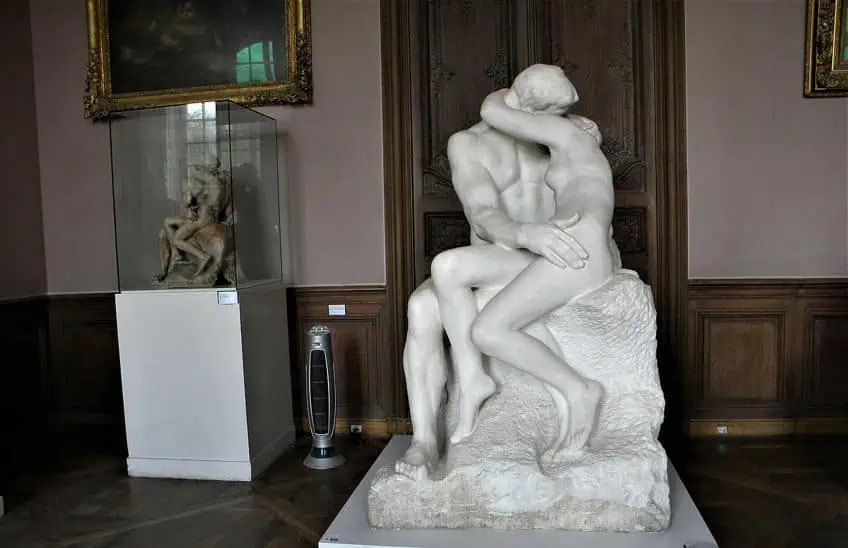
Alberto Giacometti (1901 – 1966)
| Artist Name | Alberto Giacometti |
| Date of Birth | 10 October 1901 |
| Date of Death | 11 January 1966 |
| Nationality | Swiss |
| Associated Movements, Themes, and Styles | Cubism, Surrealism, Modern art, and Expressionism |
| Mediums | Sculpture, painting, drawing, and printmaking |
| Famous Artworks | ● Spoon Woman (1927) ● Table (1933) ● L’Homme au doigt (1947) ● Table Debout (1956) ● L’Homme qui marche I (1961) |
Legendary Swiss sculptor Alberto Giacometti was one of the most influential sculptors of the 20th century who pioneered the use of Surrealist and Cubist art styles in sculpture. Giacometti was also a renowned printmaker and painter who built his artistic career on the study of human figures as seen in his Surrealist and elongated statues. Giacometti’s sculptures are incredibly valuable and sell in the 100 million on auction. His contribution to postwar sculpture is also celebrated and can be seen in his slender figure statues that tap into the imagination of the viewer to perceive subjects that are between the real and imaginary spaces.
His philosophy in sculpture was also informed by his interest in the ideas of alienation, anxiety, and perception.
L’Homme au Doigt (1947)
| Date | 1947 |
| Medium | Bronze |
| Dimensions (cm) | 179 x 103 x 42 |
| Where It Is Housed | Private collection |
L’Homme Ay Doigt is one of Giacometti’s most recognizable sculptures from the 1940s that illustrates his eerie slender figures. The bronze statue earned the title of the most expensive sculpture sold in 2015 after it was auctioned for $141.3 million. In English, the sculpture is identified as Pointing Man and was crafted one night following the war as a figure to usher mankind to a brighter future.
Louise Bourgeois (1911 – 2010)
| Artist Name | Louise Joséphine Bourgeois |
| Date of Birth | 25 December 1911 |
| Date of Death | 31 May 2010 |
| Nationality | French-American |
| Associated Movements, Themes, and Styles | Modern art, Contemporary art, Modernism, Surrealism, and Feminism |
| Mediums | Sculpture, painting, drawing, installation, and printmaking |
| Famous Artworks | ● Janus Fleuri (1968) ● The Destruction of the Father (1974) ● The Welcoming Hands (1996) ● Spider (1996 – 1997) ● Maman (2002) |
French-American sculptor Louise Bourgeois was one of the best leading female sculptors of the 20th and 21st centuries. Bourgeois was best known for her monumental spider sculptures and forms, which are autobiographical sculptures of her childhood experiences. Bourgeois was inspired by artists such as Jackson Pollock and Mark Rothko who she regularly engaged with in artistic debates. During the 1940s, the artist also faced challenges with blending into American culture and struggled with depression and anxiety for many years after her relocation.
She often used diaries to document her artistic processes and experimented with multiple mediums, including fabric, wood, plaster, bronze, and glass.
Spider (1994)
| Date | 1994 |
| Medium | Bronze with silver nitrate patina |
| Dimensions (cm) | 440 x 670 x 520 |
| Where It Is Housed | Garage Museum of Contemporary Art, Moscow, Russia |
Spider formed part of a series of sculptures known as Cells, which Bourgeois created in 1994 and later cast in bronze. The giant spider was first editioned in steel and cast in bronze and featuring silver nitrate and a brown patina with granite. The arachnid stands at a towering height and can occupy an entire room. After the work was exhibited, Bourgeois wrote a poem addressed to her mother called Ode to My Mother (1995) as well as a series of etchings illustrating spiders. The poem highlighted the role of a mother as the weaver of the family unit and was inspired by Bourgeois’ mother who was the manager of their family’s antique tapestry restoration store.

Jeff Koons (1955 – Present)
| Artist Name | Jeffrey Lynn Koons |
| Date of Birth | 21 January 1955 |
| Date of Death | Present |
| Nationality | American |
| Associated Movements, Themes, and Styles | Contemporary Art, popular culture, and figurative art |
| Mediums | Sculpture, photography, installation, and painting |
| Famous Artworks | ● Rabbit (1986) ● Michael Jackson and Bubbles (1988) ● Violet Ice (Kama Sutra) (1991) ● Puppy (1992) ● Balloon Dog (1994 – 2000) ● Play-Doh (2014) |
Jeff Koons is perhaps the most famous American Contemporary sculptor of the recent decade whose use of popular culture and recognizable imagery has informed many vibrant and iconic sculptures to date. Koons’ is best known for his contribution to Pop art as well as his use of toys, advertising, and ornamental imagery to create large-scale striking sculptures. Using a combination of artistic techniques such as sculpture, photography, and painting,
Koons plays with textures and color to produce unforgettable and enigmatic sculptures that are instantly recognizable as “Koons’ artwork”.
Balloon Dog (Blue) (c. 1993 – Present)
| Date | c. 1993 – Present |
| Medium | Mirror-polished stainless steel and transparent color coating |
| Dimensions (cm) | 307 x 363.2 x 114.3 |
| Where It Is Housed | The Broad, Los Angeles, United States |
Koons’ Balloon Dogs sell for up to millions on auction and are considered one of the most quirky and valuable kinds of Contemporary sculptures of all time. There are approximately five different versions of Koons’ Balloon Dogs, which were sculpted using stainless steel with a mirror-polished finish. Among the owners of Koons’ Balloon Dogs are Francois Pinault, Dakis Joannou, and the Broad Foundation. According to Koons, the sculptures resemble the human experience and offer the dual experience of familiar objects placed in art contexts, which evoke a disconcerting feeling for many viewers. As such, one would not expect to see a large metal balloon animal at an art museum but Koons’ Balloon Dogs challenge outdated beliefs about how popular culture can also be viewed as art.
The Process of Making Sculptures in Art
There are numerous techniques to produce sculptures as seen in the famous works above. Now that you have a thorough understanding of sculpture, its significance, and the different visual forms it can take, you can now enjoy reviewing the various materials available to produce sculptures as well as the different techniques and challenges involved in making sculptures.

Materials in Sculpture
Sculptures can be produced using a range of materials, as demonstrated by the different types of sculptures discussed earlier. Popular materials used in sculpture include bronze and other malleable metals, clay, plaster, wood, glass, found objects, cement, stone, ivory, alabaster, ceramic, weathering steel, terracotta, ferrocement, and granite. Depending on the type of sculpture you want to make, you can adjust the material and even include textiles and other everyday materials in your creation! A few primary kinds of wood used in sculpture include mahogany, oak, walnut, elm, boxwood, pine, ebony, and lime wood among many others.
Feel free to experiment by mixing and matching materials to discover your next aesthetic.
Popular Techniques in Sculpture
There are four main methods to create sculpture and these are outlined as modeling, assembling, carving, and casting. Each technique is used to produce a different type of sculpture and can be used in combination with other processes to produce unique works of art. Carving is a process that relies on the subtraction of material from a medium and is often used when working with stone, marble, or wood. Subtractive sculptures are created by removing the material from the medium and can be achieved via cutting, carving, and sanding.
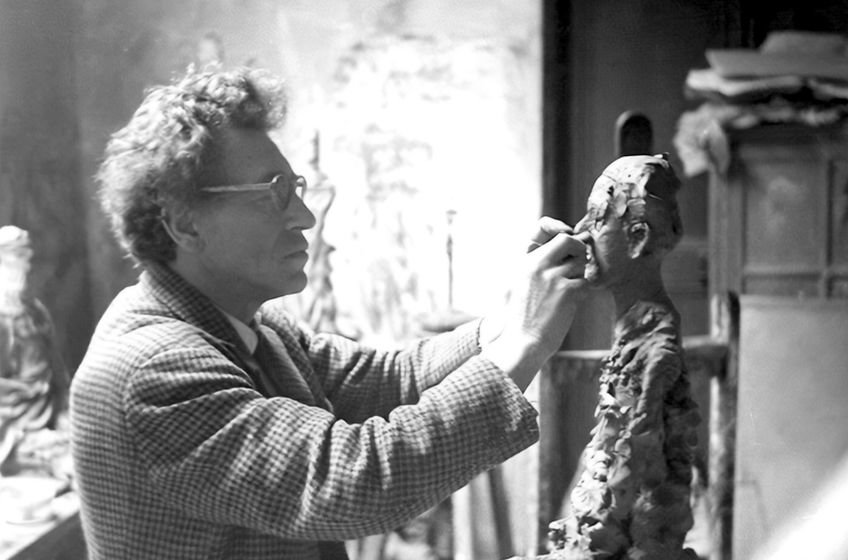
Additive processes in sculpture involve piecing materials together to create a three-dimensional artwork and include processes such as assembling, soldering, welding, and sewing. Modeling is one technique that artists use to mold a shape or element for their sculpture. This is an ancient technique that was used to produce pottery and depended on soft materials such as wax and clay to make molds and shape them using chisels and knives. Casting is a common sculpture technique whereby an artist pours molten or fluid materials that later harden into a mold or template. The majority of the artistic effort is put into creating the mold, after which the artist can produce multiple copies. Casting is effective since it gives the final artwork a clean finish.
Common Artistic Challenges in Creating Sculptures
One may encounter more challenges when creating sculptures using the subtractive method to create a finished artwork. Subtractive sculptures are of a higher difficulty than additive works and require an expert hand and lots of practice. This type of sculptural process is challenging because it is difficult to correct your mistake once the material is removed and if not, impossible to fix, which may result in a waste of material and extra cost to the artist. Some of the other challenges presented to aspiring sculptors is locating the correct materials, especially if one is adopting an experimental approach.
Certain materials such as marble are not as readily available as common materials.
Technical limitations to the medium itself may also be present and sculptors often have to learn how to manipulate imperfections to create a visually pleasing sculpture. Another common challenge is capturing the emotion of your subject. Capturing emotion in sculpture can prove to be a challenging feat, however, one needs to carefully study facial anatomy and subtle variations in musculature to grasp emotional expression and then experiment with techniques to execute it. Challenges linked to relief sculptures involve compacting a composition into a limited depth space, which is harder than it seems and requires detailed planning.
The Future of Sculpture in Contemporary Society
Major movements that defined the genre of Modern sculpture throughout the 20th century include the Art Nouveau, Cubist, Pop art, Minimalist, De Stijl, Suprematist, Constructivist, Futurist, Formalist, Surrealist, and Abstract movements. These art styles played a major role in shaping the way that Contemporary artists think and internet sculpture, which brings up the notion of other advancements in sculpture and art that enhance the medium in ways that extend beyond the Modern.
The genre of Contemporary sculpture is in ongoing development as the emergence of new mediums rooted in technology and the digital age continue to grow and influence the way we interpret and experience art. Modern uses of sculpture in art include the categories of public art, conceptual art, installation art, kinetic sculpture, digital sculpture, and Contemporary figurative sculpture, which present many engaging ways in which people can think about sculpture.
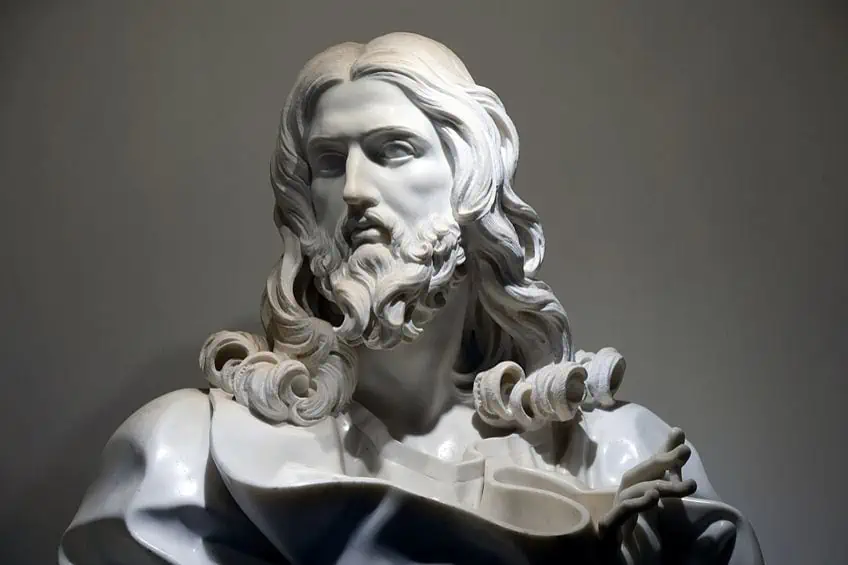
Prominent Contemporary artists such as Yayoi Kusama, Ai Wei Wei, and Anish Kapoor are among the top references for understanding the potential of Contemporary sculpture and its function in an ever-changing digital era. The age of rapid technological development has also significantly influenced the development of kinetic sculpture and digital sculpture, the latter of which is a digital art form that uses computer software to generate three-dimensional artworks that can be incorporated into virtual reality. The development of innovative mediums such as 3-D printing has also revolutionized the potential of the readymade in sculpture and presents further questions about the ways that one can expand traditional mediums using new technologies.
The impact of technology on sculpture has contributed to the emergence of alternative sculptural forms and expanded the definition of sculpture as seen in digital art. Other technological developments such as augmented reality have also influenced the way we view sculptures since the technology allows for the overlay of digital content on the physical world and enables sculptors to create interactive sculptures that can respond to the observer’s gestures. Technology has also enabled the use of sustainable materials in sculpture by creating room for more efficient ways to recycle materials and become more environmentally friendly. Technology has also helped bridge communication between different artists to drive collaboration across the world and enable interactions between architects, artists, and engineers who work together to produce large-scale collaborative sculptures.
Sculpture as an art form has evolved significantly since prehistory, and with the helping hand of technology and human innovation, has altered the way we perceive three-dimensional objects and their occupation of space. Through collaboration with the environment, design principles, and elements of sculpture, artists can create sculptures that leave a profound impact on the art world. We hope that this article has inspired you to branch out into the world of sculpture and collaborate with your available resources and professionals on creating the next batch of iconic Contemporary sculptures!
Frequently Asked Questions
What Is Sculpture?
Sculpture is defined as an artistic process by which a three-dimensional structure is created using solid materials. Sculptures can be produced using additive, subtractive, or digital processes and encompass forms produced via carving, casting, and modeling.
What Are the Four Basic Types of Sculpture?
The four basic types of sculptures include relief sculpture, subtractive sculpture, additive sculpture, and casting sculpture. Other common types of sculpture include free-standing sculptures, assemblage sculptures, installation sculptures, kinetic sculptures, abstract sculptures, environmental sculptures, and figurative sculptures.
What Are the Elements of Sculpture?
The elements of sculpture include the stylistic features that enable artists to communicate their messages. These include the space, color, line, texture, shape, form, and value of an artwork. Additionally, materiality and mark-making are also considered elements of sculpture. The supporting sculpture elements include volume, light, and shade.
Jordan Anthony is a Cape Town-based film photographer, curator, and arts writer. She holds a Bachelor of Art in Fine Arts from the University of the Witwatersrand, Johannesburg, where she explored themes like healing, identity, dreams, and intuitive creation in her Contemporary art practice. Jordan has collaborated with various local art institutions, including the KZNSA Gallery in Durban, the Turbine Art Fair, and the Wits Art Museum. Her photography focuses on abstract color manipulations, portraiture, candid shots, and urban landscapes. She’s intrigued by philosophy, memory, and esotericism, drawing inspiration from Surrealism, Fluxus, and ancient civilizations, as well as childhood influences and found objects. Jordan is working for artfilemagazine since 2022 and writes blog posts about art history and photography.
Learn more about Jordan Anthony and about us.
Cite this Article
Jordan, Anthony, “Sculptures in Art – The History of Three-Dimensional Art.” artfilemagazine – Your Online Art Source. October 3, 2023. URL: https://artfilemagazine.com/sculptures-in-art/
Anthony, J. (2023, 3 October). Sculptures in Art – The History of Three-Dimensional Art. artfilemagazine – Your Online Art Source. https://artfilemagazine.com/sculptures-in-art/
Anthony, Jordan. “Sculptures in Art – The History of Three-Dimensional Art.” artfilemagazine – Your Online Art Source, October 3, 2023. https://artfilemagazine.com/sculptures-in-art/.


